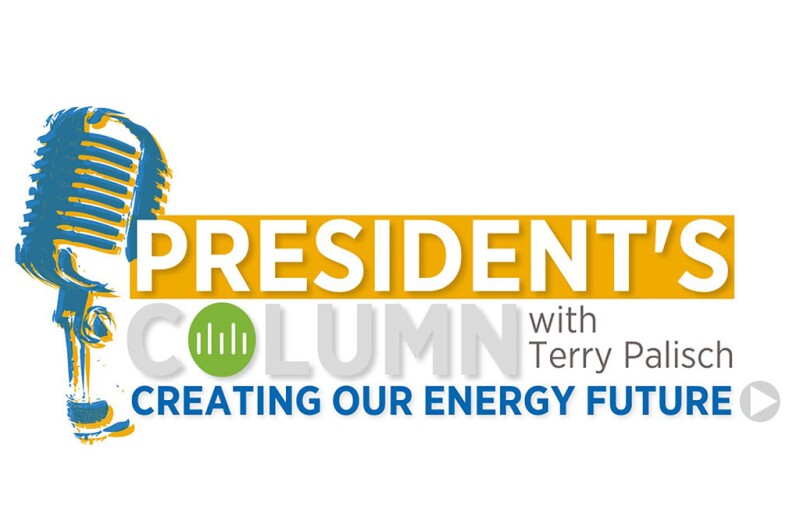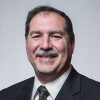In this episode and transcript, Terry Palisch is joined by Karen Olson, the SPE technical director for completions, to discuss how SPE can help us collaborate more on a global level via our technical sections. This transcript is an excerpt from the podcast episode. Listen to the full episode here.
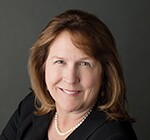
Hello, I’m Karen Olson, SPE Completions Technical Director and president of Olson Turner Enterprises. I’m pleased to join 2024 SPE President Terry Palisch in this episode to talk about how SPE facilitates technical collaboration, particularly for our technical sections. As a technical director, I see the tremendous importance of our technical sections and the collaboration opportunities they provide. Thank you for inviting me to join you, Terry. I hope you had a great holiday and a happy new year.
Thanks, Karen. I hope you did too. I want to thank you for being a part of the episode. Last month I had a great time speaking with Simeon Eburi, an SPE regional director for North America, about our regional sections. When I started thinking about who should host the technical sections episode, I thought what better person than the current chair of the Technical Content Committee on the SPE Board and current completions technical director. I know, having been in your shoes as a technical director, that the technical sections and SPE Connect, all things technical, fall under your purview. So, it’s good to have you here today.
To start, I want to talk about technical sections because like regional sections, they’re key to fulfilling SPE’s mission of connecting our members. I don’t know if everybody understands what is available, particularly when it comes to technical sections, SPE’s technical communities, and SPE Connect. I think it’s important that members understand this is a big aspect of advancing technical competence by collaborating and advancing technology, as well as ultimately impacting their energy future.
Terry, just like you, I’ve had the opportunity to be heavily involved with the technical sections. I now think they are as important as the regional sections. But for people who don’t know what technical sections are, maybe you can explain more about them.
Technical sections got their start many years ago when we had something we called technical interest groups (TIGs). The first technical sections were formed in 2006 and 2007. It’s hard to believe they’ve been around that long. The first were wellbore positioning, drilling, and research and development (R&D). In 2007, our third TIG was carbon dioxide capture, utilization, and storage (CCUS), which I think is a surprise to people that we have had CCUS as a technical section for over 15 years.
They are usually a subset of one of the technical disciplines, something that’s specific, like flow assurance or artificial lift and gas well deliquification. They gained popularity over just the last year. We currently have 22—five recently added including data science and engineering, methane emissions management, hydrogen, management, and this past year, we added plug and abandonment. The membership likes these, and I think they’re important.
At last count, we had over 65,000 professional members signed up for technical sections. You can be a part of more than one, so that’s duplicating some people in my count, but they are becoming very popular. We allowed students to join the technical sections last year. Now we have over 10,000 student members.
Technical sections are like regional sections in that there is a section chair, a program chair, and an education chair, and they collaborate and put on events. You are working on a technical topic, but you’re putting on events, typically virtual because it is a global membership. Most of what you do is virtual, but you might do a fundraising event or provide a scholarship as an in-person event. Several months ago, at ATCE, in-person technical section meetings were held. Think regional sections, but on a global basis, putting together a technical topic.
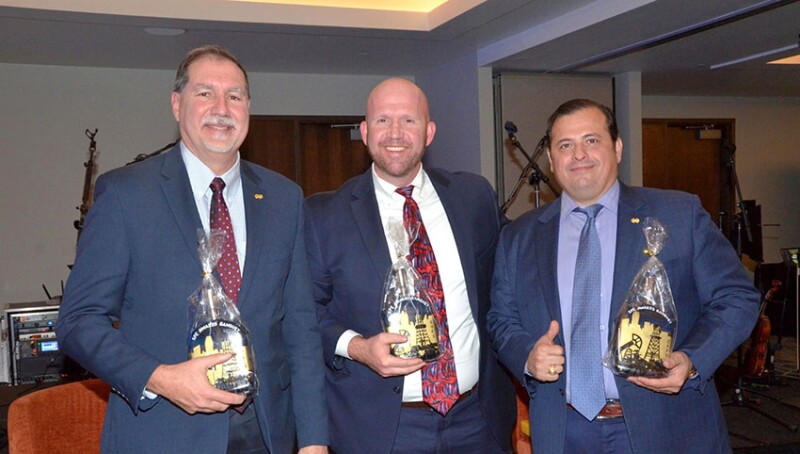
That is a good point to make. These are global technical sections. We are trying to reach an audience around the world. Another point is that these aren’t just classic drilling or reservoir topics. You mentioned CCUS, but they cover all aspects of what members want to talk about or have meetings around. Correct?
Yes, there are 22 of them. Most are more classic petroleum engineering-related, falling specifically in a discipline. Some are related but not exactly in a discipline—topics like management, R&D, or human factors. Those are critically important to our industry, but they’re not classic petroleum engineering. We also began to lean into some of the related energy technologies like CCUS. There are newer ones like geothermal energy, hydrogen, and methane emissions management. They give our members a chance to collaborate on specialized topics, both petroleum engineering‑related and advanced technologies. Also, it gives our nontraditional subjects a place to reside and expands our tent into related energies.
I remember back in 2020 when you were the completions technical director and I was leading the effort to start the Hydraulic Fracturing Technical Section (HFTS) during the COVID pandemic. A group of us wanted to collaborate and pull everybody together in our discipline, especially since we were all stuck at home. And it was with your sponsorship that we were able to launch and form the HFTS. How are new technical sections created or formed?
It is not very difficult. First, you start with an outline of the objectives for this section, essentially a mission statement. What do you want to discuss? What is your technical focus? It takes more effort since it is a global section, and you will not all be sitting in the same region or city. You will need a list of your proposed members, your section leadership, and a governance model. In other words, how are you going to elect your leadership positions? What are the criteria for membership? The last thing, which is probably the most important for a lot of reasons, is that you need the sponsorship of a technical director. All these technical sections fall under one of the technical directors, who will do a couple of things.
First, the director will help you with the process; there is a template. The technical director makes sure there’s no overlap with another technical section and makes sure the topic has broad appeal. You may remember with hydraulic fracturing, you were focused on North America. We discussed expanding that tent, and now you’ve got leaders in the technical section that spans the entire globe. The technical director can guide you through that.
Yes, we started North America-centric, but with your help we broadened it. The leaders of the technical section and the current chairs are based in the UK. Now we have quarterly international webinars as well as monthly webinars. I believe they’re also looking for liaisons around the world. These technical sections continue to grow once you form them both in size and in what we’re doing in them. What about SPE Connect? What is it and how does it fit in with the technical sections?
We had TIGs about the same time we were forming the technical sections. These technical interest groups were online forums that didn’t put on events, but it was a place where you could discuss topics. The TIGs were upgraded using collaboration software and renamed SPE Connect. It is really what it sounds like. SPE Connect is the way that we connect our membership. SPE Connect goes hand-in-hand with the technical sections. It is now the place where a technical section has a site to communicate with its members and is also the place where you have discussion threads. Members can ask questions about some technology or a problem they’re having and have other members respond.
The other thing about SPE Connect is that you have your online profile and access to the eight technical communities, like drilling or completions, and 10 nontechnical communities, like the young professionals, the members in transition, the volunteer portal, or diversity and inclusion. SPE Connect provides members with the ability to connect through the communities and the member directory, all in one place.
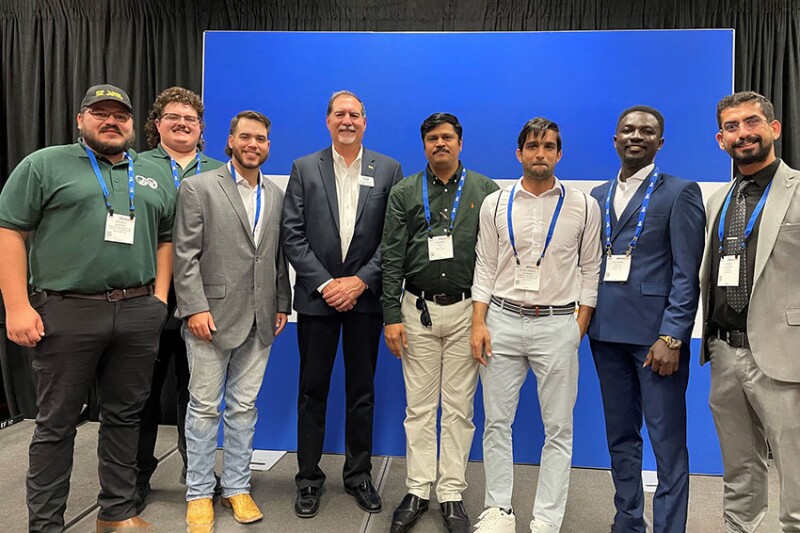
It seems like the focal point if you want to find any information. Why are SPE Connect and our technical sections critical to SPE fulfilling its mission?
I think it is like the regional sections. I see this as another cornerstone of fulfilling the mission. Remember, our mission is connecting our members to technology, connecting our members to other members, and connecting our members to external stakeholders. I think the easiest way to see how this all fits together is to take some examples of the technical sections.
Let’s take the Hydraulic Fracturing Technical Section, which by the way, is an award-winning technical section that holds monthly webinars and a quarterly international webinar. It allows you to network and disseminate technical knowledge, and when you have breakout sessions, you can dive deeper into a subject or perhaps network more.
I know you just started the Outstanding Graduate Student Award for the HFTS and gave your first awards at the Hydraulic Fracturing Technology Conference (HFTC) last February. There is a networking reception at HFTC, and I know you’ve interviewed the Legends of Hydraulic Fracturing.
The Drilling Systems Automation Technical Section (DSATS) is one of the more established sections; they have six subcommittees. These subcommittees range in topics like open source, drilling, and data quality. It also has one of my favorite student programs, which is Drillbotics, an international drilling design competition that promotes a multidisciplinary approach to solving a drilling challenge, it is super cool. The last one I’ll highlight is the Sustainable Development Technical Section (STTS). They have been around since 2010 doing multiple programs, but one of their recent initiatives is the Gaia program. The first Gaia Summit was held in 2021 and is now an annual event. The next one will be in April in Muscat, Oman.
That’s great. How can members, young and senior, get the most out of these technical sections? In SPE Connect? What should we be doing as a member of SPE?
Yeah, that’s a great question, Karen. First, go to SPE Connect and select the technical sections you are interested in, shoot for two to four, the ones specific to your work and interests. Maybe there are a couple that you want to stay on top of. That’s kind of the way I do it.
Next, update your profile. You can put all kinds of information in there for yourself. That’s in your member directory. Also, look at the nontechnical communities, those are going to be ways that you can stay abreast of some of the nontechnical discussions. For example, I’m a member of three technical communities, three technical sections, and four nontechnical communities.
One of them that I think is important is the SPE Volunteer Community. Sign up for the volunteer portal to get notifications on opportunities to volunteer.
I think the important thing is to look at SPE Connect as a one-stop for connecting. Now students can take advantage of the platform and observe what’s going on in the technical threads. If you’re a young professional, join these and observe and ask questions about technical topics you need to understand better. If you’re a seasoned professional, I would encourage you to help mentor, answer questions, and help young professionals with challenges they’re having. The challenges we face are going to be many, and to meet those challenges we’re going to have to engage in lifelong learning, we’re going to have to collaborate. I think if we can collaborate to advance technologies, it’ll help advance not only our professional development, but it’ll help us create our energy future.
Absolutely. That is great advice for everybody to take to heart. I’m ready to go back and investigate SPE Connect to see what I’m signed up for and to make sure I’m on the volunteer portal. Terry, it has been great to talk to you today. And I hope to see you at the hydraulic fracturing conference in February. What are you talking about in next month’s podcast episode?
Well, first, let me make a quick reminder about the 2024 Annual Technical Conference and Exhibition Call for Papers which is open until 19 February. If you want to present a paper at the 100th anniversary of ATCE in New Orleans in September, it’s time to get your abstract in.
Speaking of technical papers, that’s what we’re going to talk about next month. I think it’s one of the key ways that SPE disseminates technical information. We’ll talk about papers, touch on OnePetro, the SPE Journal, and the 75th anniversary of the Journal of Petroleum Technology.
I look forward to seeing you at HFTC as well. I want to take one more opportunity to thank you for being a part of the podcast. This has been great. But I also want to thank you not only for your service on the SPE Board but also for your involvement in getting HFTS started. I think you’re a great example of someone who’s creating their energy future. Thank you so much.

